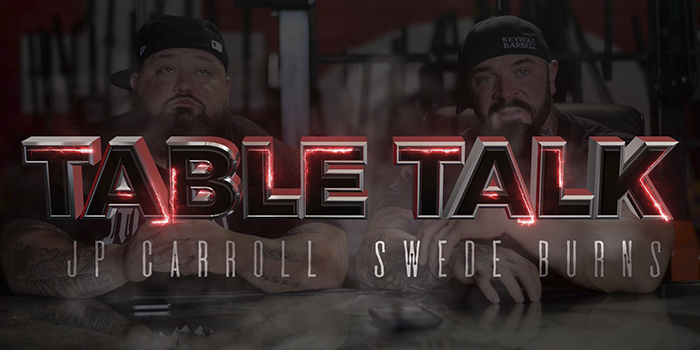
In this edition of Table Talk with Swede Burns and JP Carroll, the two elitefts team members answer a question about consistency in technique:
"How do you keep the same focus at getting all of the steps down to ensure good form through every rep in a workout?"
To explain the way Swede accomplishes this, he shares his approach to teaching a new lifter. When he makes corrections at the start with a new lifter he has never worked with before, he has to prioritize corrections. The first priority is always stuff that is dangerous and could lead to injury, such as lifting in lumbar flexion. After safety is no longer an issue, he only then moves to correcting the things that will make the lifter technically proficient at the movement. The goal is to eliminate any wasted energy throughout the lift.
To do this, Swede uses a checklist. For example, in the squat: air, neck, brace, squat. For each of these mental cues, the lifter knows what to do for better execution of the movement:
- Air: Fill and expand the lower abdomen
- Neck: Pack the neck neutral
- Brace: Use the muscles of the midsection to pull the ribs down toward the pelvis
- Squat: Now the lifter is ready to squat
Swede says that going through this checklist often fixes 80% of technical issues. To ensure this checklist is always used, Swede has his lifters reset between every single rep in a set. Even on an all-out set with 5thSet, the lifters go through air, neck, brace, squat between every rep. This not only improve technique on every rep but also makes training more specific to what is required on the platform in a meet.
Similarly, JP shares what he learned about consistent technique once he started training with Swede's guidance. He had always been able to "muscle shit up" even if technique sucked, but when beginning to incorporate more volume he recognized that the more crisp the movement was and the better the technique, the more strength he was able to actually apply to the movement.
In using learning and reminder tools such as the checklist, Swede warns that these cues must become internal. In training, hearing these cues is meant to be corrective so that a lifter can fix mistakes and build better technique. But once the meet comes around, the execution of the movement should be thoughtless. The focus at that point should be on moving the weight quickly — not on listening for cues from a coach.
WATCH: Table Talk with Swede Burns and JP Carroll — The Growth of 5thSet and Training Elite Lifters










